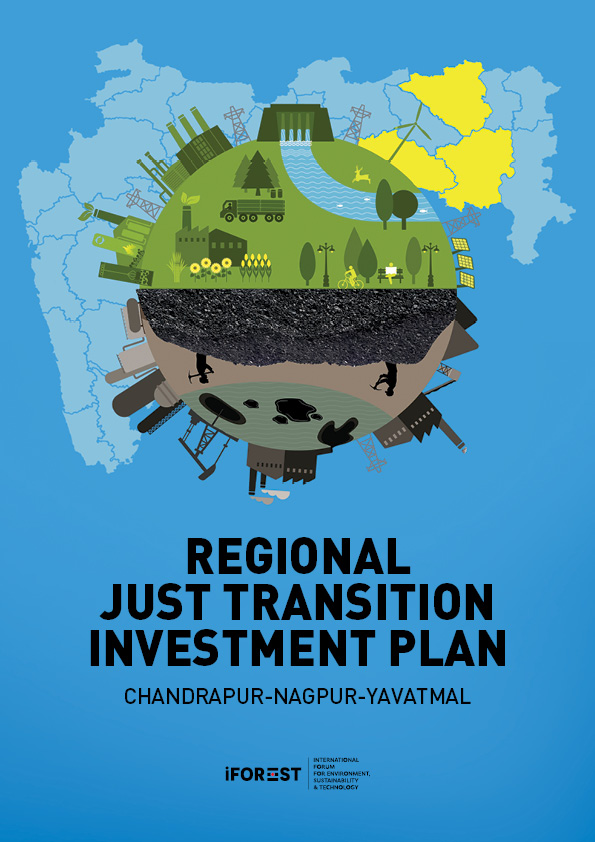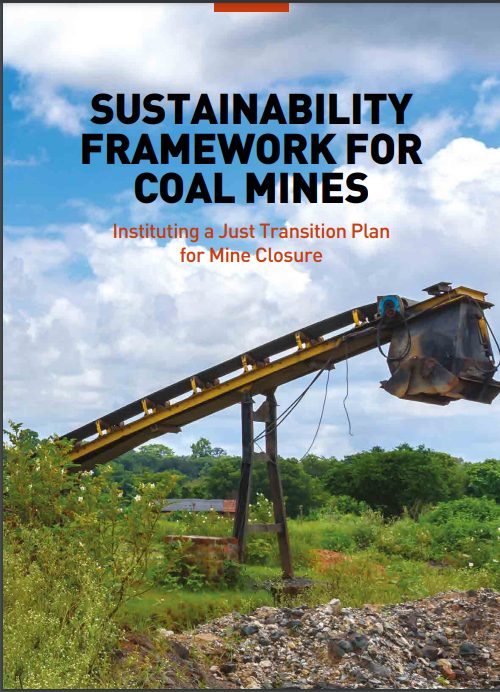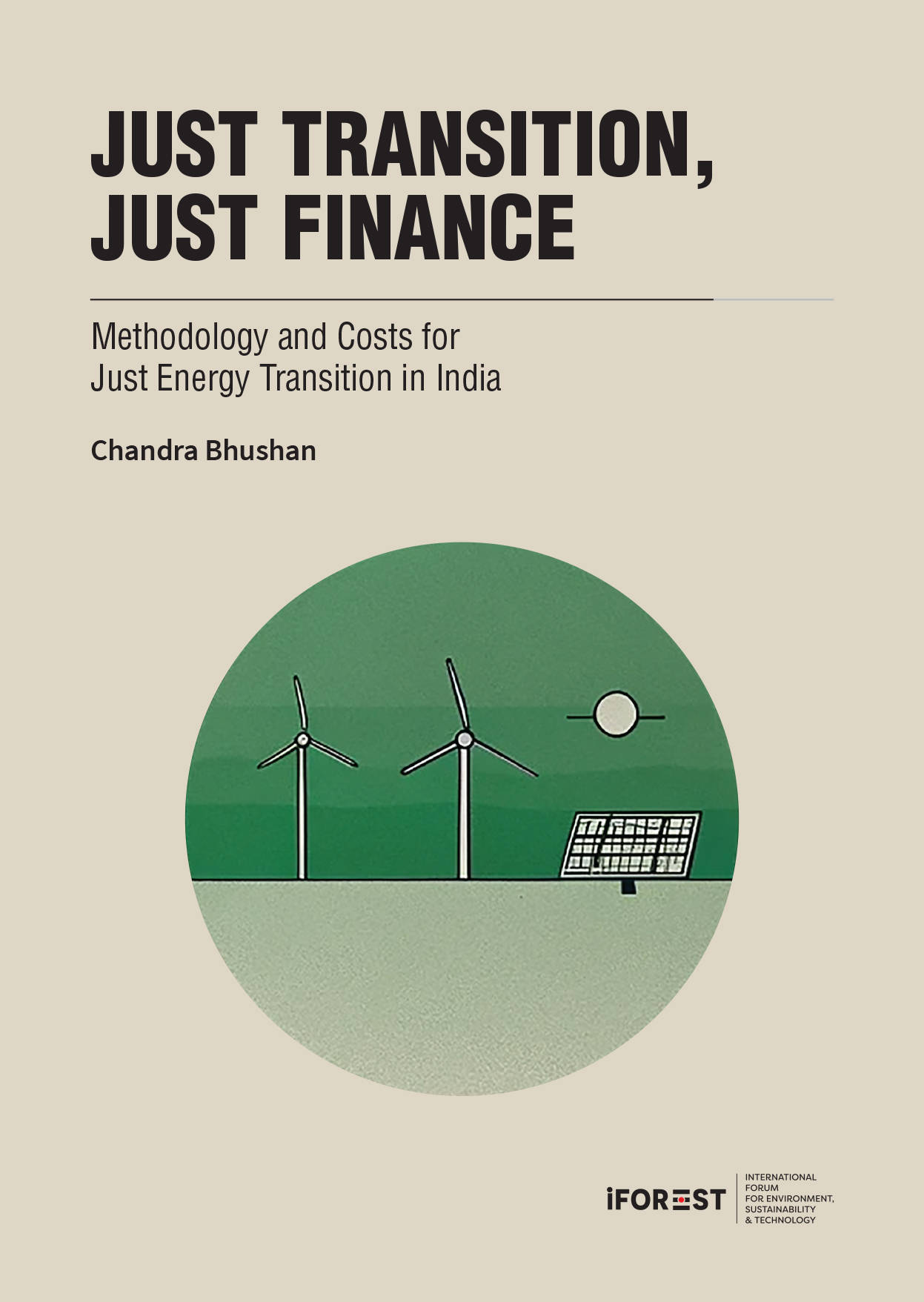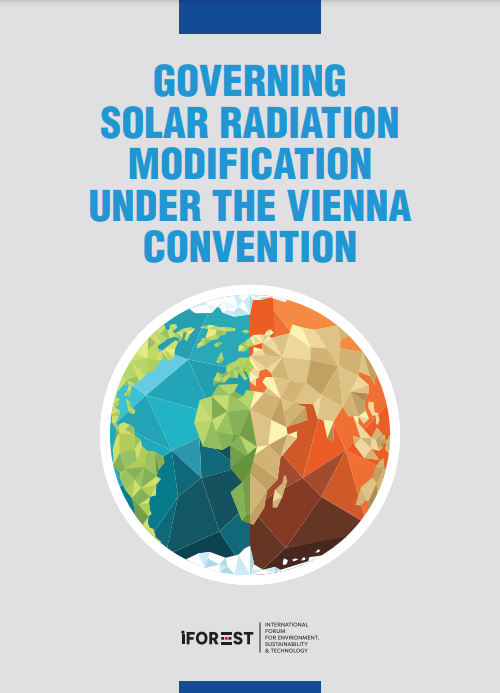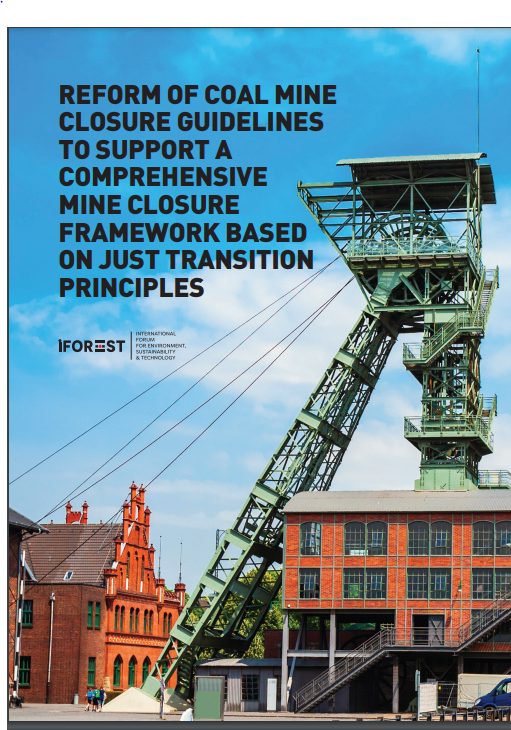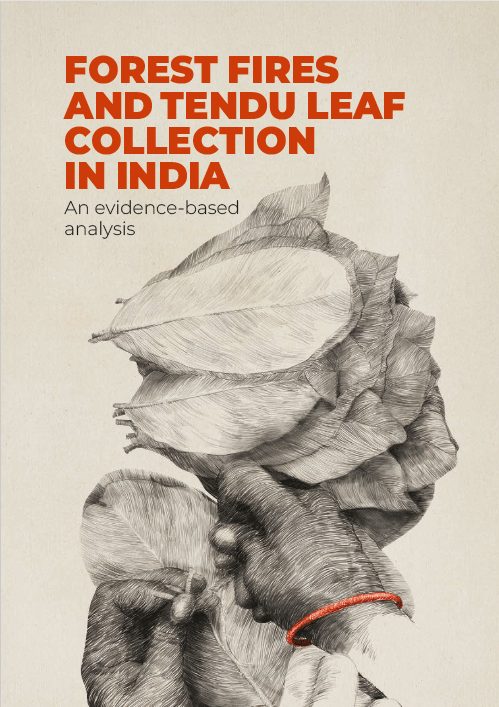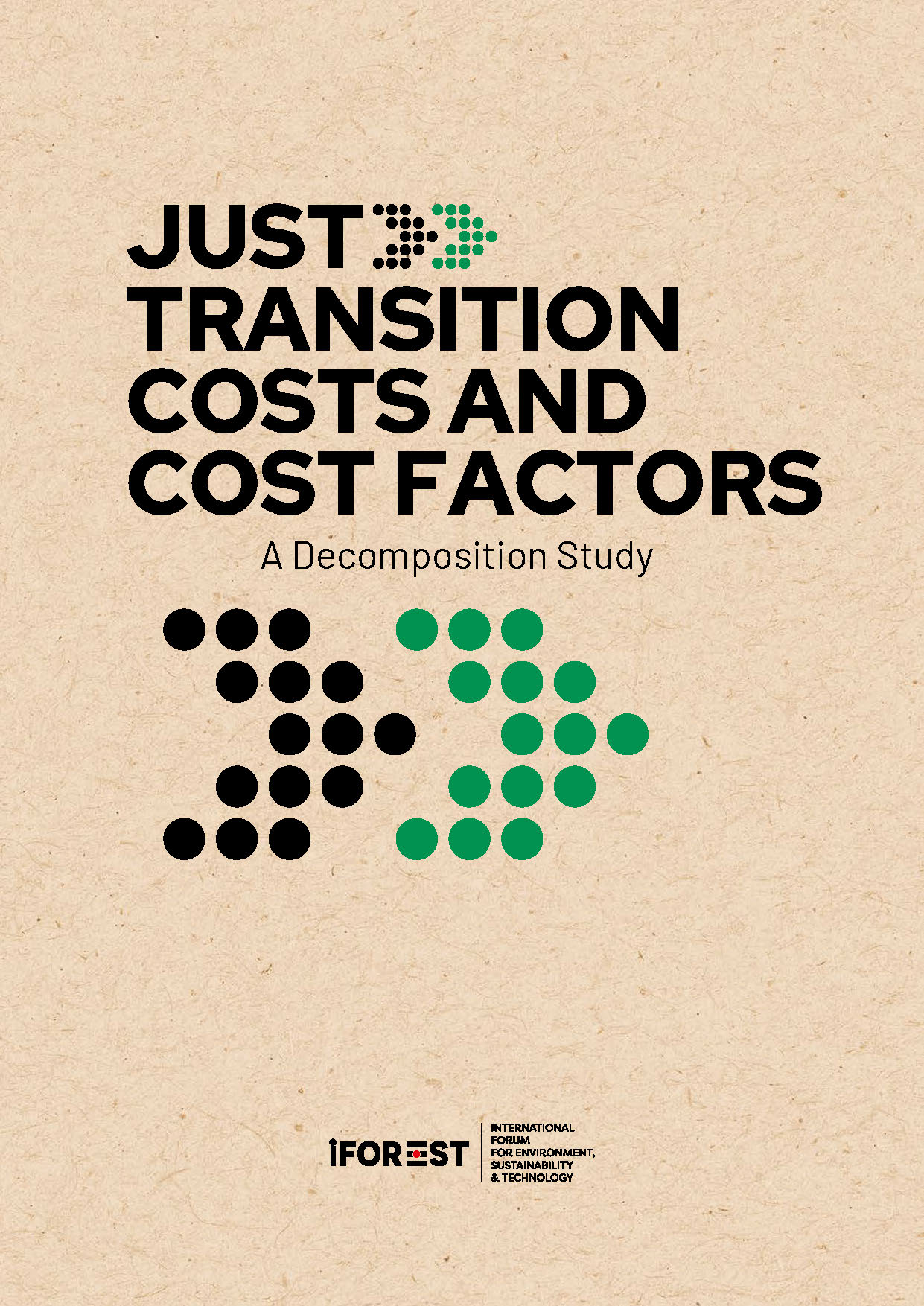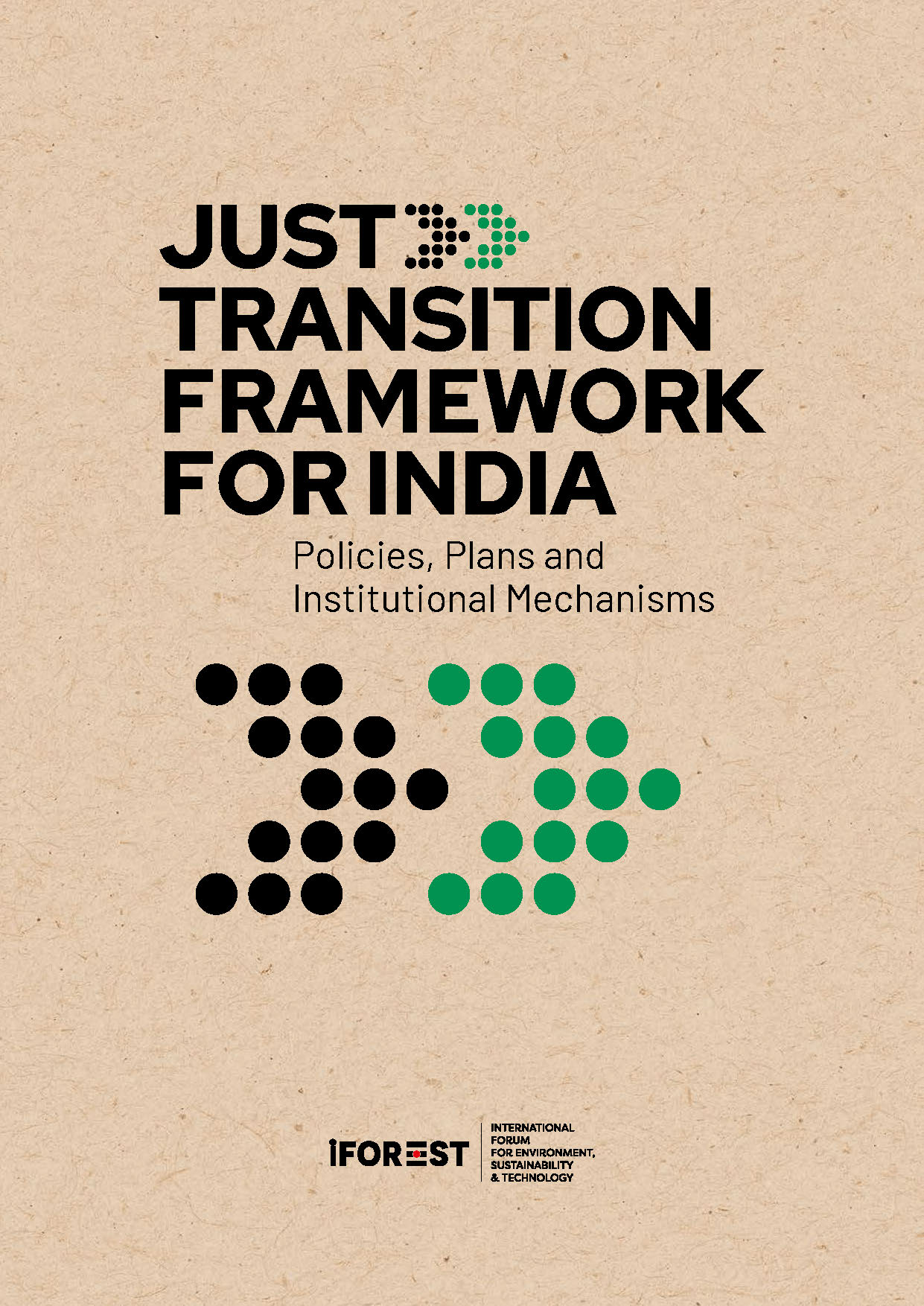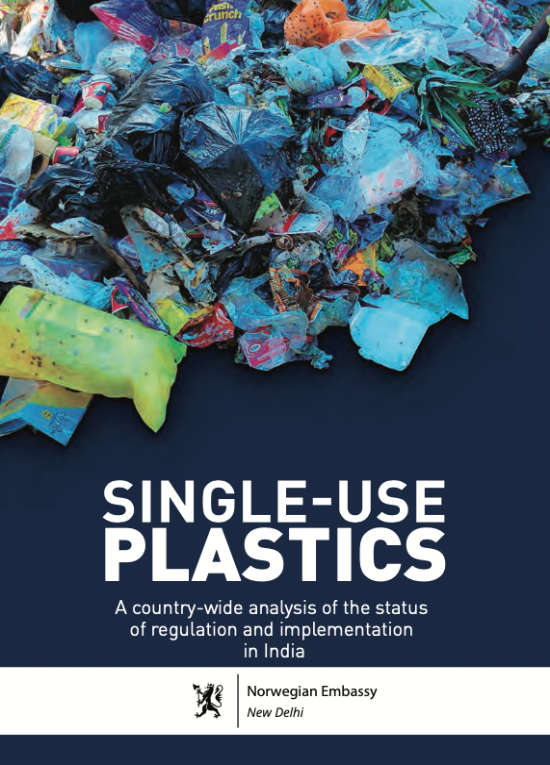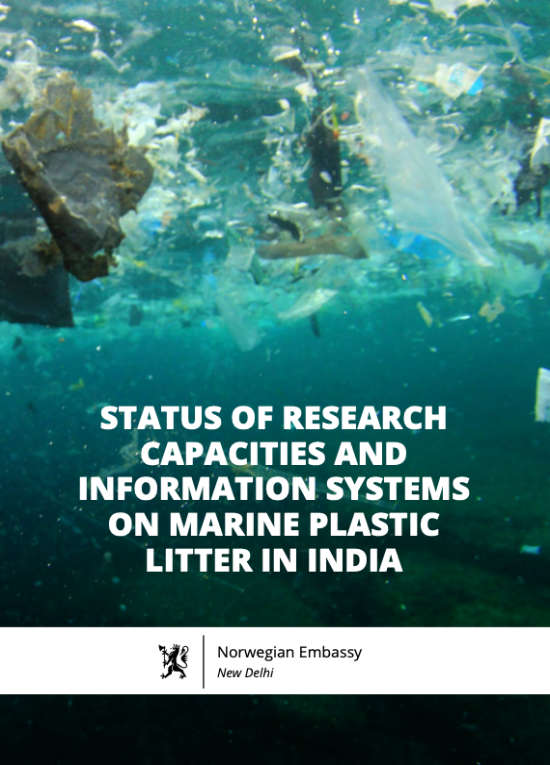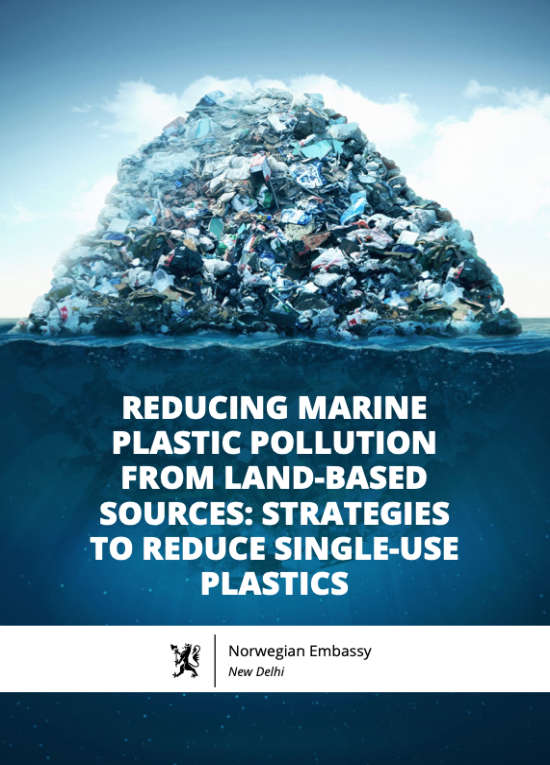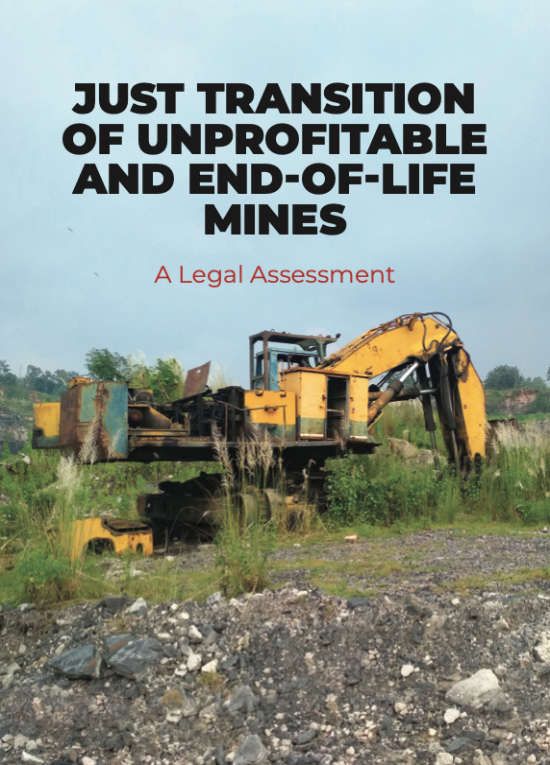Reports Categories

Regional Just Transition Investment Plan: Chandrapur-Nagpur-Yavatmal
CATEGORY : Energy | Industry Green Rating | Others
Regional Just Transition Investment Plan: Chandrapur-Nagpur-Yavatmal— is the first of its kind in India. It presents a 10-year roadmap to transform Maharashtra’s largest energy cluster into a hub for green energy and green industry. The plan aims to enable a just and inclusive energy transition in alignment with the state’s climate, energy, and development goals. It identifies key Economic Development Nodes to attract green investments, scale renewable energy, and generate new local employment.
The report highlights the quantum of potential investments and outlines the broader macroeconomic benefits for the region.
Sustainability Framework for Coal Mines
CATEGORY : Mining & DMF
About 0.35 million (3.5 lakh) hectares of land are currently under operational mines in India. Besides, a large amount of land is available with closed mines. This land holds enormous promise to create economic opportunities in the coal regions besides enhancing environmental sustainability. This report analyses the reclamation practices and socio-economic impacts of coal and lignite mine closures in India through 3 case studies. Based on the observations, the report outlines key policy and regulatory reforms to support a sustainable reclamation and repurposing of coal mining land, including the process of developing a just transition plan as part of final mine closure planning.

Just Transition Just Finance
CATEGORY : Climate Change | Environmental Governance
The report- Just Transition Just Finance- has been developed recognizing the need for an empirical basis to determine the cost of just energy transition, which can help countries to develop just transition plans, make necessary investments and foster global partnerships for securing finances. The report introduces an approach to estimate the cost of a just energy transition at the sub-national and national levels. The methodology can also be tailored to estimate transition costs for a coal mine or a power plant. It also outlines a broad spectrum of investments, including grants and subsidies, necessary to decommission and repurpose coal mines and power plants, supply green energy alternatives, promote economic diversity, assist workers and businesses, and strengthen community resilience.

Governing Solar Radiation Modification Under The Vienna Convention
CATEGORY : Climate Change | Energy | Environmental Governance
Geoengineering refers to a suite of technological interventions aimed at slowing or halting some of the effects of climate change. Two of the major kinds of geoengineering that are at present gaining traction rapidly are Solar Radiation Modification (SRM) and Carbon Dioxide Removal (CDR). SRM approaches focus on deliberately cooling the planet by reflecting a small amount of sunlight to space or by allowing more of Earth’s infrared radiation is to escape to space. SRM methods include utilizing mirrors in space to reflect sunlight (Space Based Reflectors), increasing the reflectivity of land or ocean surfaces (surface albedo), increasing the reflectivity of marine clouds (Marine Cloud Brightening), and increasing the reflectivity of the stratospheric aerosol layer via Stratospheric Aerosol Injection of SAI.

Reform of coal mine closure guidelines to support a comprehensive mine closure framework based on just transition principles
CATEGORY : Mining & DMF
Mine closure is a complex and multifaceted issue that includes environmental, social, economic, and safety concerns. However, the existing coal mine closure guidelines primarily focus on bringing back the mining land as much as possible to pre-mining conditions and undertaking afforestation measures. Reforming the coal mine closure guideline based on principles of just transition is crucial for ensuring environmental sustainability and socio-economic vitality in the regions historically dependent on coal mining.This report outlines the key reforms required for developing a comprehensive mine closure guideline based on just transition principles. The report is intended to inform the government and the industry about developing a comprehensive mine closure framework, as also being envisaged by the Ministry of Coal.
Forest fires and tendu leaf collection in India : An evidence-based analysis
CATEGORY : Climate Change | Energy | Environmental Toxins
India’s climate change goals are threatened by the growing incidence of forest fires, estimated to have increased tenfold in the last two decades. Forest fires are a serious ecological concern due to their adverse impact on biodiversity, terrestrial ecosystem productivity and fertility, and soil and water quantity and quality, among others. A serious cause for concern is that nearly 95 per cent of forest fire incidences in India are believed to be human-induced, whether accidental or deliberate. Understanding this is important to design and introduce policies, practices and schemes that can help arrest the growing number of forest fires in the country.

Just Transition Costs and Cost Factors: A Decomposition Study
CATEGORY : Climate Change
A Just Transition from coal dependence encompasses technological transition with social, economic, and institutional transformation. This study attempts to identify cost factors for each component based on a suitable denominator – the capacity of decommissioned thermal power plant (TPP), reduced coal production, affected worker or affected population.

Just Transition Framework for India
CATEGORY : Climate Change
For India to meet its net zero target by 2070 and energy independence goal by 2047, a framework of just transition at the national and state levels is essential. The framework(s) will guide strategic pathways and implementation mechanisms to achieve net-positive environmental, social and economic outcomes in a timebound manner and through the cooperation of all stakeholders.

Single-Use Plastics
CATEGORY : Environmental Governance | Environmental Toxins
The report evaluates the status of regulations on SUPs and their implementation across the 36 states and UTs of India between 2016 to 2019 to understand gaps and challenges in their design and implementation. It is important to note that these analyses were conducted, well before the current SUP ban was announced. Thus, while some of the lessons in the report may be used to design any future plastic legislation, it is not a commentary on the SUP ban of 1 July 2022.

Status of research capacities and information systems on marine plastic litter in India
CATEGORY : Environmental Governance | Environmental Toxins
The report presents the status of data and research, and the capacities of research institutions on marine plastic litter in India. The literature review was carried out to assess the availability of data on marine litter in four different fates, as recognised under the SDG Target 14.1: on beaches or shorelines (beach litter), floating on the water or in the water column, on the seafloor/seabed, and ingested by biota (e.g., sea birds). Research institutions were surveyed and studied to understand their geographical presence, focus research areas and engagement, and their capacity to conduct research on marine litter.

Reducing Marine Plastic Pollution from Land-Based Sources: Strategies to Reduce Single-use Plastic
CATEGORY : Environmental Governance | Environmental Toxins
This policy brief on reducing marine plastic pollution from land-based sources, focuses on the current state of knowledge and institutional capacity on marine plastic litter and the strategies to reduce marine litter by developing a comprehensive approach to reduce the demand and usage of SUPs. This is the first step to develop an integrated approach to reduce marine plastic litter.

Just Transition of Unprofitable and End-of-Life Mines: A Legal Assessment
CATEGORY : Environmental Governance
The report offers an in-depth evaluation of laws and regulations pertaining to environmental, land and labour aspects of the coal sector, which have salience for a just transition. It also looks into the challenges and limitations of the existing laws and regulatory mechanisms and outlines necessary reforms to support an environmentally and socially responsible transition, which is also timebound.


